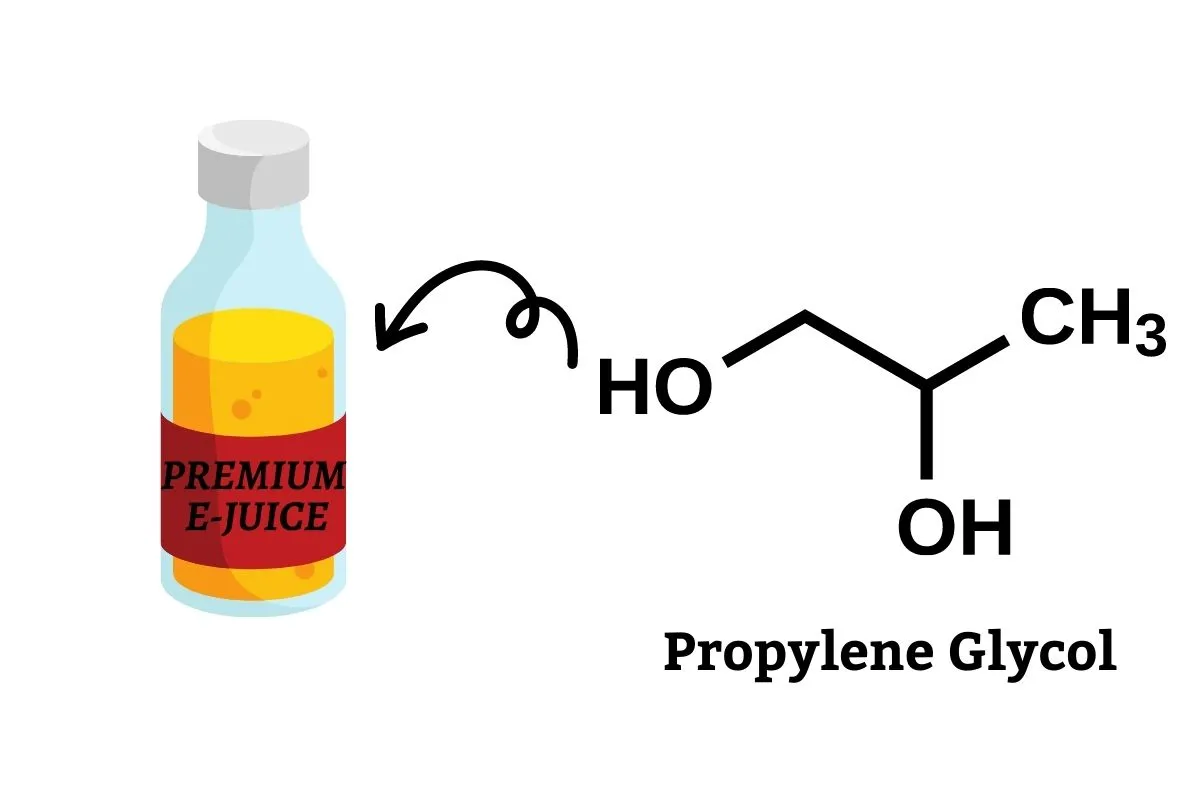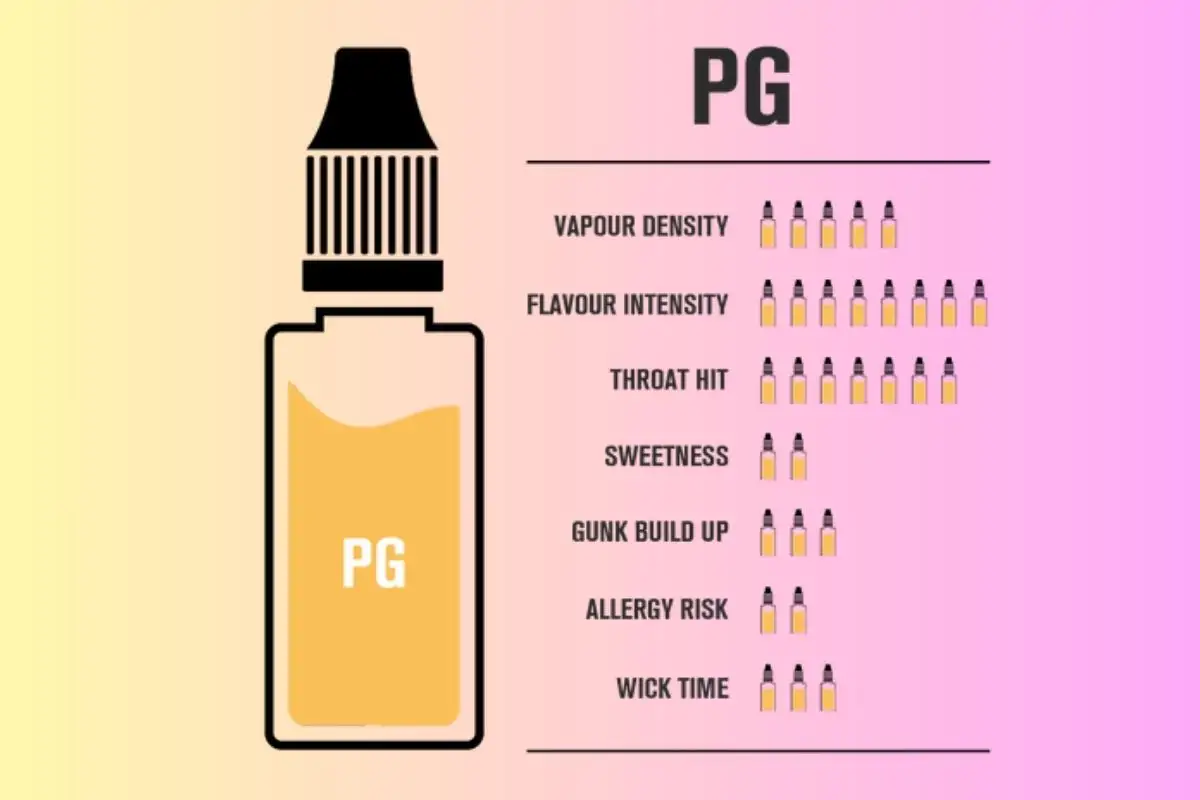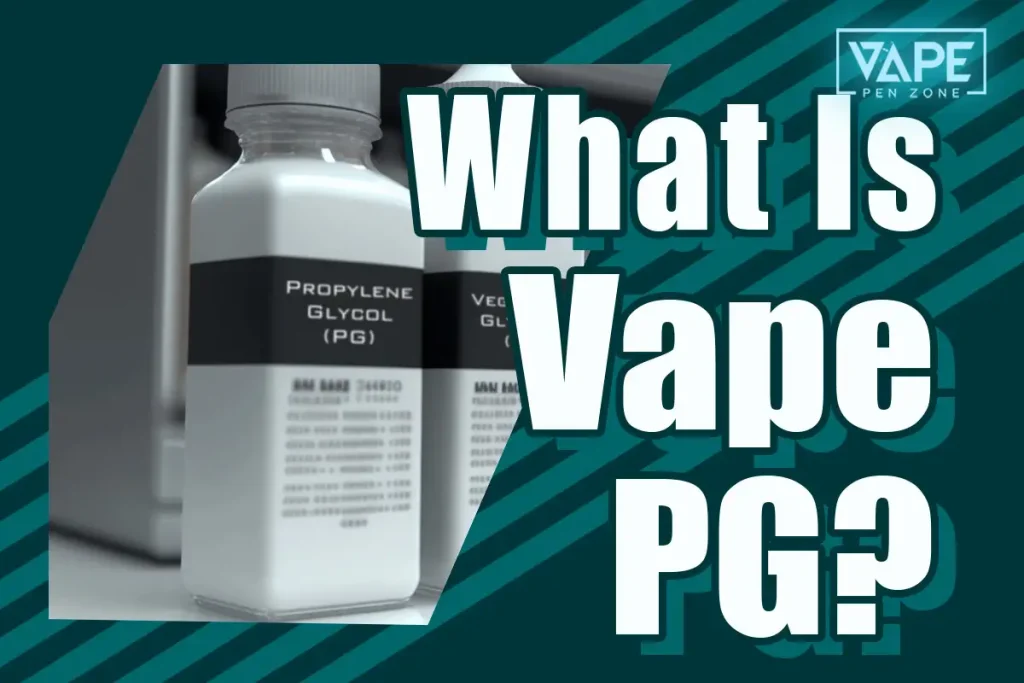If you’re new to vaping, you may have heard the term PG (Propylene Glycol), but you might not know what it is or how it affects your vaping experience. In this article, we’ll cover what Vape PG is, how it’s used, and any potential health risks associated with it. Additionally, we’ll weigh the pros and cons of Vape PG to help you make an informed decision about vaping.
What Is Vape PG?

PG, short for Propylene Glycol, is an artificial liquid mixing ingredient that is commonly used in foods, ointments, and lotions. Its main role in E-Liquid is to bind together all of the other ingredients, such as flavour and nicotine. Vape PG itself is tasteless and odorless, so it won’t affect the smell or taste of your vape juice. Additionally, PG helps create the “throat hit” sensation when vaping, which simulates the experience of smoking cigarettes. The higher the percentage of PG in the vape juice, the stronger the throat hit will be.
How PG Works In Vaping Products?
Propylene glycol (PG) is a frequently used ingredient in vaping products, including e-cigarettes and vape juices. Vape PG serves as the foundation for many e-liquids, producing vapour when heated. Furthermore, it transports flavourings, colorings, and nicotine to provide a satisfying smoking experience for users.
Usually, PG and VG are combined in various proportions to create an e-liquid base. The most popular ratio is 50:50 (PG:VG), which offers a satisfying hit and a well-rounded vaping experience. If you prefer a more subtle vape with thinner clouds, you can opt for a higher PG content. However, keep in mind that a higher PG ratio results in a stronger throat hit.
Pros and Cons Of Using Vape PG

Advantage of using Vape PG
- Increasing flavour intensity – Propylene glycol (PG) is completely tasteless, unlike vegetable glycerin (VG). Vape PG provides a sharper throat hit, resulting in a slightly more intense flavour hit.
- Stronger throat hit – For those accustomed to smoking cigarettes, Vape PG can replicate the familiar throat sensation. However, PG is also a powerful humectant, which means it absorbs moisture. Consistent vaping with high PG e-liquids can lead to a dry mouth and throat.
- Tasteless and odorless – Vape PG is a substance that is both odorless and tasteless, and it does not have any effect on the flavour of your e-juice.
- Thinner consistency – Vape PG has a low viscosity and runny consistency similar to water. This makes it easier to handle and mix with other substances, such as flavourings and nicotine. It also allows for more efficient wicking in vape devices, as the liquid can flow more easily through the device’s coils.
- Lower gunk buildup – The low density of Vape PG results in a lower likelihood of gunk buildup on the heating components of your vapourizer. Compared to thicker VG liquid, gunk will accumulate at a much slower pace.
- Faster wick absorption – Due to the low viscosity of Vape PG, coils can be wicked much faster. This is because cotton buds absorb thinner liquids more quickly. With high PG e-liquids, you’ll find that wicking and vaping is easier and more immediate.
Disadvantage of using Vape PG
- Less vapour produced – Vape PG has a lower density than VG, resulting in smaller vapour clouds. While this might be preferable for those who want to vape discreetly, others might choose high PG e-juices for the enhanced flavor or stronger throat hit.
- Higher allergy risk – Vape PG may trigger allergic reactions in a small group of vapers. Symptoms may vary from mild tingling sensations in the throat to intense scratching and burning sensations. It is normal to feel a dry throat and harsher throat hits when vaping PG. However, if you experience any unusual symptoms, it is best to discontinue the use of PG and switch to MAX VG concentrates.
Vape PG Safety Concerns
According to studies, PG is considered safe to consume orally. In fact, the FDA has labeled it as “generally recognized as safe” for use as a food additive. However, most studies regarding the safety of propylene glycol focus on its ingestion rather than its inhalation in aerosol form. While early studies, such as one from 1947, suggested that inhaling PG was ‘completely harmless,’ it’s essential to note that more recent research is necessary to fully understand the long-term effects of inhaling PG.
Tips For Using Vape PG
If you’re new to vaping or switching to a propylene glycol (PG) vape juice, keep the following in mind:
- Some people may be allergic to PG. Therefore, it’s important to test it before regular use.
- PG can cause symptoms of dehydration, like dry mouth, sore throat, and increased thirst. It is advised to drink more water and liquids than usual for the first few weeks of using your e-cigarette.
Be aware that some unusual reactions could be side effects. However, if you’re new to vaping or have never smoked before, any adverse reactions could also be due to the PG. Monitor your symptoms and consult a healthcare professional if concerned.
Verdict
To sum up, Propylene Glycol is a crucial ingredient in e-liquids that aids in producing a less harsh throat hit and transporting the e-liquid’s flavour. Although Vape PG is generally deemed safe for use in e-liquids, some individuals may experience irritation to the throat and lungs, particularly if they are sensitive to it. Vapers who are worried about the effects of Vape PG on their health may wish to contemplate using e-liquids with a higher concentration of vegetable glycerin (VG) instead.
FAQ
Is 70 VG and 30 PG good?
A high VG juice is ideal for vapers who want to produce large, dense clouds of vapour. A VG/PG ratio of approximately 80:20 or 70:30 will generate huge amounts of thick clouds. However, it’s important to note that a high concentration of VG may not be suitable for all types of e-cigarettes, as it can potentially clog the wick or coil, resulting in device malfunction.
Is PG safe in Vapes?
Propylene glycol, due to its thin composition, is believed to have a potentially irritating effect on the throat and lungs, although this has not been definitively proven. However, the fact that the FDA has approved propylene glycol as an additive in food products suggests that it should be safe for use in vaping products when used in moderation.
Which is better higher VG or PG?
PG provides a more intense throat hit and enhances both flavour and nicotine levels more effectively than VG. It also requires less heat to produce vapor, making it less likely to cause burns or melt plastic components during vaping.
Which is healthier PG or VG?
Both PG and VG are non-toxic, organic compounds that are safe for human consumption. They have been used for decades as food additives in a variety of commercially available food products, such as cheese, cereal, ice cream, and soft drinks.
Can you smoke 100% PG?
Yes, it is certainly possible to vape a juice that contains only Propylene Glycol (PG) or Vegetable Glycerin (VG). However, it is advisable to opt for a blend of both PG and VG, as this will result in a stronger flavour and a more satisfying nicotine hit on the throat.
Is 100% VG good?
When compared to PG, VG may not always carry flavours as effectively, and can sometimes reduce the intensity of more subtle flavours in vape juice. While it is possible to vape e-juice that is made up of 100% VG, it is generally recommended to use a VG/PG blend.


